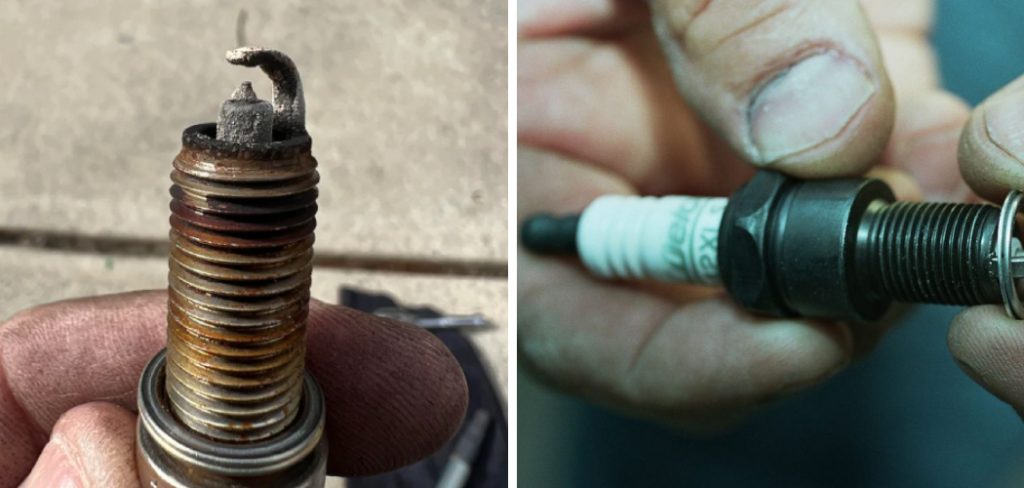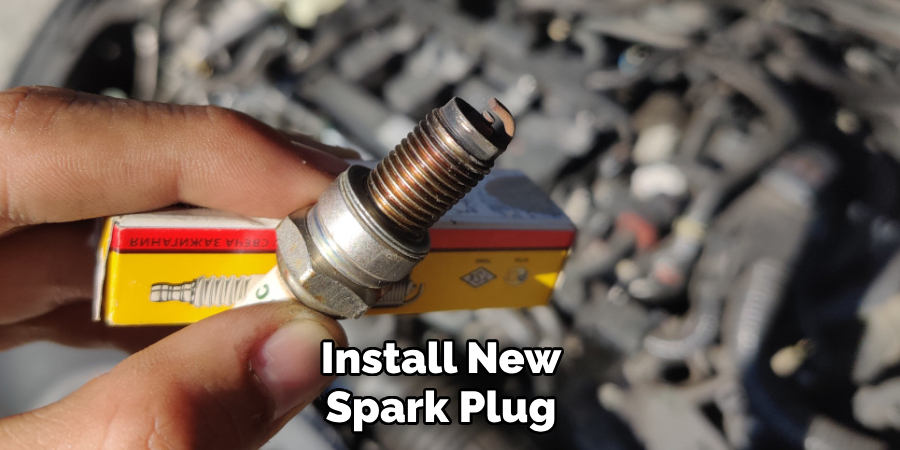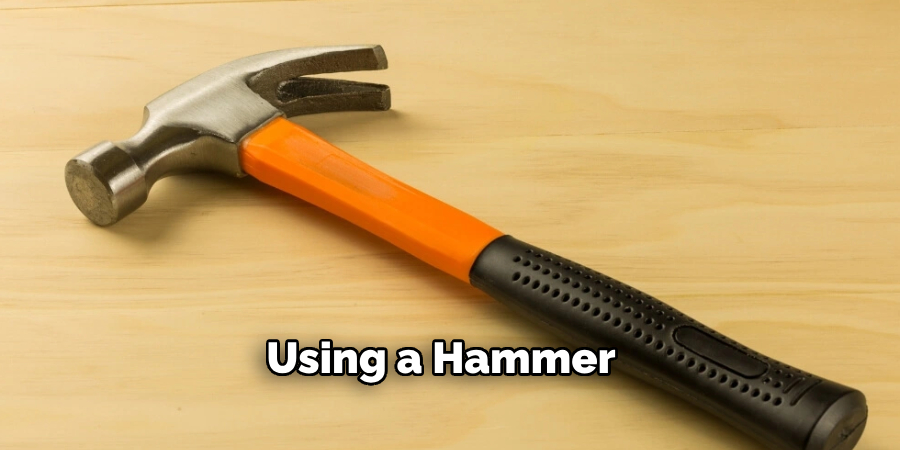Attention all car enthusiasts and DIY mechanics! Have you ever experienced the frustration of trying to remove a frozen spark plug? If so, you’re not alone. This common issue can cause serious headaches for even the most experienced vehicle owners. However, fear not – with the right knowledge and tools, you can easily tackle this problem and save yourself from costly repairs at the mechanic.

In this blog post, we will walk you through the step-by-step process of how to remove a frozen spark plug without causing damage to your precious engine. So grab your tools and get ready to become a master at dealing with stubborn spark plugs!
Tools and Materials You Will Need to Remove a Frozen Spark Plug
- Socket set
- Spark plug socket
- Breaker bar
- WD-40 or penetrating oil
- Thread chaser or tap and die kit (optional)
- Shop rag or paper towel
Step-by-step Guidelines on How to Remove a Frozen Spark Plug
Step 1: Prepare Your Vehicle
Before you begin, make sure your vehicle is parked on a flat surface and the engine has cooled down completely. It’s important to work on a cool engine to prevent any accidents or injuries. Prepare the necessary tools and materials listed above and have them within reach. If you are using a thread chaser or tap-and-die kit, make sure to choose the correct size for your spark plug threads.
Step 2: Remove Spark Plug Boot
Use a socket set and spark plug socket to remove the spark plug boot. The spark plug socket has a rubber insert that will grip onto the end of the spark plug, making it easier to remove. If the spark plug boot is stuck, gently twist and pull to loosen it. While removing the boot, be careful not to damage the wires or break the connector.

Step 3: Apply Penetrating Oil
Spray a generous amount of WD-40 or penetrating oil around the base of the spark plug. This will help loosen any rust or debris that may be causing the spark plug to freeze. Let it sit for a few minutes to allow the oil to penetrate and do its job. Applying heat with a blow dryer or heat gun can also help loosen the frozen plug.
Step 4: Use a Breaker Bar
Take your breaker bar and attach the spark plug socket to it. A breaker bar is longer and provides more leverage than a regular ratchet, making it easier to break loose frozen bolts or plugs. Place the socket over the spark plug and turn it counterclockwise, applying steady pressure. Be careful not to use excessive force as this could cause the spark plug to break.
Step 5: Remove Frozen Spark Plug
With continuous turning, the frozen spark plug should eventually loosen and come out. If you encounter resistance, stop immediately and apply more penetrating oil. You can also try tightening the plug slightly before attempting to remove it again. Once the plug is removed, clean the threads with a shop rag or paper towel.
Step 6: Checking for Damage
Inspect the spark plug and threads for any signs of damage or wear. If you notice any chips, cracks, or worn-down threads, it’s best to replace the spark plug entirely. If the threads are damaged, you may need to use a thread chaser or tap-and-die kit to repair them before installing the new spark plug. This step is crucial to ensure the proper functioning of your engine.
Step 7: Install New Spark Plug
Using a spark plug socket, carefully install the new spark plug into the cylinder head. Hand-tighten it first and then use a torque wrench to tighten it to the manufacturer’s recommended torque specification. Do not over-tighten, as this can cause damage to the threads or spark plug. Installing a new spark plug gasket is also recommended.

Following these steps will ensure the successful removal of a frozen spark plug without causing any damage to your engine. It’s important to always take precautions and work carefully when dealing with delicate engine parts. By doing so, you can save yourself time, money, and frustration in the long run. So next time you encounter a frozen spark plug, don’t panic – just follow our guide and get back on the road in no time!
Additional Tips and Tricks to Remove a Frozen Spark Plug
1. When removing a spark plug, always turn it counterclockwise. Turning it clockwise can cause the threads to tighten and make it more difficult to remove.
2. If you encounter extremely stubborn or rusted spark plugs, applying heat with a blow dryer or heat gun can help loosen them.
3. Always clean the area around the spark plug before attempting to remove it. This will prevent any debris or dirt from falling into the engine.
4. If you’re using a thread chaser or tap-and-die kit, make sure to use the correct size and avoid applying too much force as this can damage the threads.
5. Regularly inspect and replace your spark plugs according to your vehicle’s recommended maintenance schedule. This can help prevent them from freezing in the future.
6. When reinstalling a spark plug, make sure to use anti-seize lubricant on the threads. This will prevent them from freezing and make it easier to remove in the future.
Following these additional tips can help make the process of removing a frozen spark plug even smoother and prevent any potential issues in the future. With patience, the right tools, and proper maintenance, you can confidently tackle any stubborn spark plugs that come your way. Happy driving!
Things You Should Consider to Remove a Frozen Spark Plug
1. The first thing to consider is the age and condition of your vehicle. Older vehicles or those with high mileage are more likely to have rusted or frozen spark plugs.
2. Checking the weather conditions before attempting to remove a spark plug is also important. Cold weather can cause metal parts to contract, making it harder to remove frozen spark plugs.
3. Using quality tools and materials can make a significant difference in the success of removing a frozen spark plug. Investing in good quality tools can save you time, money, and frustration in the long run.
4. If you’re not confident in your ability to remove a frozen spark plug, it’s best to seek professional help. Attempting to force or remove it improperly can cause further damage to your engine.
5. Regularly maintaining your vehicle, including checking and changing spark plugs, can help prevent them from freezing in the first place. This can save you from the hassle of dealing with frozen spark plugs in the future.

By considering these factors, you can better prepare yourself for removing a frozen spark plug and potentially avoid any issues altogether. Remember to always exercise caution and seek professional help if needed. Happy driving!
Precautions Need to Be Followed for Removing a Frozen Spark Plug
- Always make sure to disconnect the vehicle’s battery before attempting to remove a spark plug.
- Wear protective gear, such as gloves and safety glasses, when working with tools or chemicals.
- Do not use excessive force when attempting to remove a frozen spark plug. This can cause it to break and potentially damage your engine.
- Avoid using oil or lubricants to try and loosen a frozen spark plug. These can foul the spark plug and cause it to malfunction.
- If you’re using penetrating oil, make sure to follow the manufacturer’s instructions carefully, as some oils may have specific application methods.
Taking these precautions will ensure your safety while removing a frozen spark plug and prevent any potential damage to your vehicle or engine. Always prioritize safety and proper technique when working with any vehicle parts. Happy driving!
Frequently Asked Questions
Can I Use a Spark Plug Removal Tool to Remove a Frozen Spark Plug?
Yes, a spark plug removal tool can be used but may not always be necessary. Other methods, such as penetrating oil and heat, can also help loosen the frozen spark plug.
Can I Use a Hammer to Remove a Frozen Spark Plug?
No, using a hammer to remove a frozen spark plug can cause damage to the engine and is not recommended. It’s best to use proper tools and techniques for removing stubborn spark plugs.

How Often Should I Check My Spark Plugs for Wear or Damage?
It’s recommended to check and potentially replace your spark plugs every 30,000 miles or according to your vehicle’s recommended maintenance schedule. However, if you notice any issues with your engine’s performance, it’s best to have them checked immediately.
What Do I Do If the Spark Plug Threads Are Damaged During Removal?
If the spark plug threads are damaged during removal, seek professional help for repair or replacement. Attempting to install a new spark plug without properly fixing the damaged threads can cause further complications and damage.
Can I Drive My Vehicle with One or More Spark Plugs Frozen?
It’s not recommended to drive your vehicle with frozen spark plugs as it can cause performance issues and potentially damage your engine. It’s best to address the issue as soon as possible to prevent any further damage. Happy driving!
Conclusion
In conclusion, learning how to remove a frozen spark plug is essential knowledge for any vehicle owner. By following proper techniques, using quality tools and materials, and regularly maintaining your vehicle, you can confidently tackle any stubborn spark plugs that come your way. Remember to prioritize safety and seek professional help if needed. With patience and the right approach, removing a frozen spark plug doesn’t have to be a daunting task. Happy driving!

